In the lush rainforests of Central and South America, a creature moves at a pace that defies our fast-paced world. This creature is the sloth, nature’s slowest mammal.
Sloths are fascinating creatures, known for their leisurely lifestyle. Their slow movement is not a sign of laziness, but a survival strategy.
Their diet of leaves provides little energy, forcing them to conserve it. This results in their notoriously slow pace.
But there’s more to these creatures than their speed. They are a marvel of adaptation, perfectly suited to their arboreal life.
In this article, we delve into the world of sloths. We explore why they are nature’s slowest creatures and how their unique lifestyle contributes to their survival.
Join us on this journey into the treetops, as we uncover the secrets of these captivating creatures.
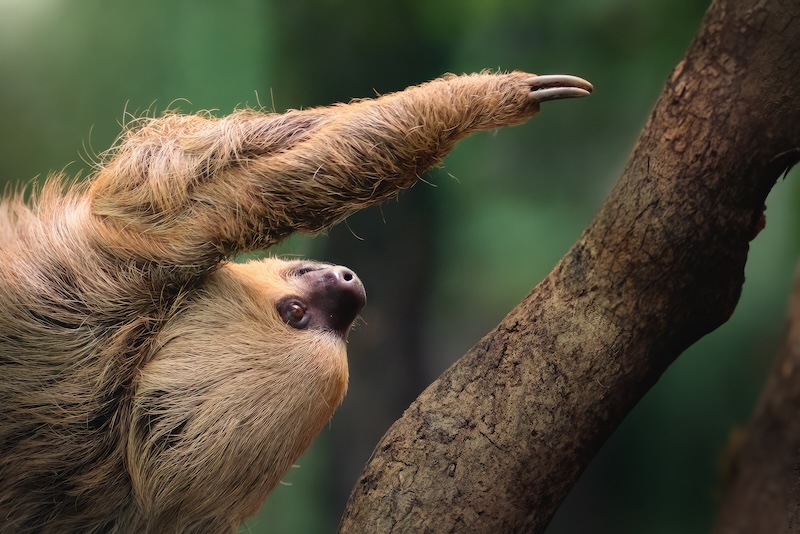
Sloths thrive in the dense, vibrant rainforests of Central and South America. They are truly at home among towering trees and thick canopies.
These remarkable creatures are an integral part of this ecosystem. They support biodiversity in these vast, green worlds.
Six species of sloths exist, split into two categories: three-toed and two-toed. Each has distinct traits and adaptations.
The three-toedes, belonging to the genus Bradypus, possess a unique “smiling” face. Their friendly expression endears them to many.
In contrast, the two-toedes from the genus Choloepus lack this facial marking. They are slightly larger, with their own unique charm.
Every species plays a crucial ecological role, from seed dispersal to nutrient cycling. Together, they maintain the health of their forest homes.
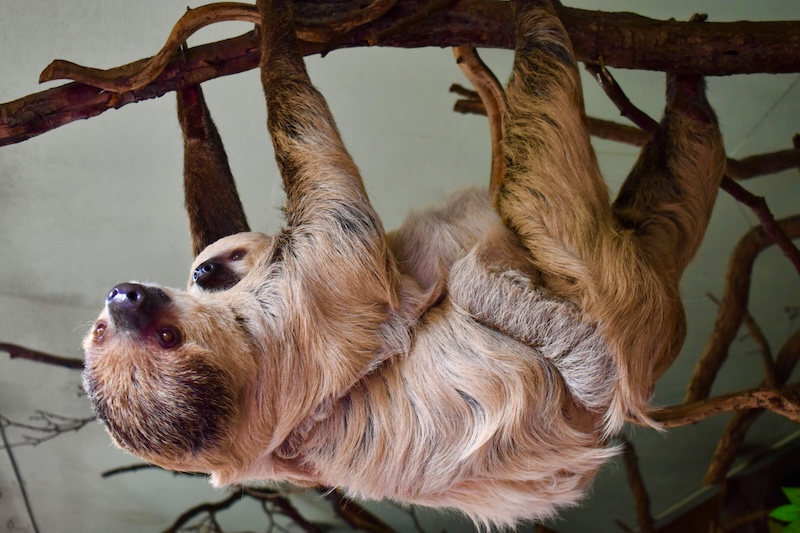
Sloths are synonymous with slow movement, a trait linked to their low metabolic rate. This slow pace is not merely a lazy dalliance but a sophisticated evolutionary adaptation.
Their metabolism is less than half of what you’d expect for their body size. This slow-burning metabolism defines how sloths experience the world.
Diet plays a significant role in this unusual metabolic pattern. They primarily consume leaves, which are low in calories and nutrients.
Digesting these fibrous leaves takes time and energy—much more than their bodies readily supply. As a result, energy conservation becomes crucial.
Moving slowly is a strategic choice. It allows sloths to preserve energy, given the minimal nutrition their foliage diet provides.
Consequently, sloths have perfectly adapted to their environment. By prioritizing energy over speed, sloths find a way to thrive in their lush, leafy homes.
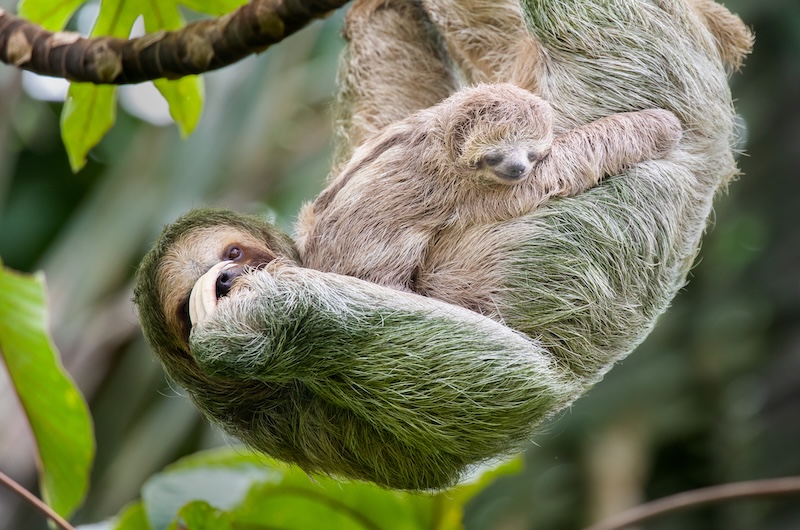
They live life at a leisurely pace, dedicating most of their time to rest. Approximately 15 to 20 hours daily are spent in peaceful slumber.
When they wake, they move with deliberate caution through the trees. Their actions are slow and purposeful to conserve precious energy.
Despite their slow speed, sloths are remarkably agile climbers. They deftly navigate the labyrinth of branches.
Feeding is a priority amidst their restful routine. Sloths munch on leaves, occasionally enjoying fruits and flowers, with each meal taken slowly.
One of the most curious aspects of sloth behavior is their bathroom habits. They descend from their arboreal heights once a week to defecate.
This routine venture to the forest floor is risky, leaving them vulnerable to predators. Yet, it is an essential part of their lives.
Survival depends on these routines, showcasing their delicate balance between rest and necessary action. Their days offer a glimpse into a unique survival strategy.
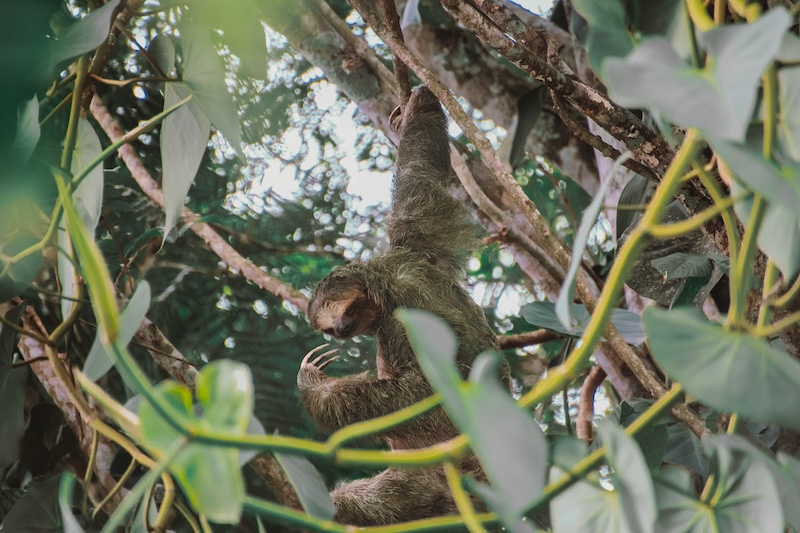
Trees are their sanctuary, providing both shelter and sustenance. Living high above the forest floor, sloths find safety among the branches.
This treetop lifestyle is crucial for their survival, protecting them from ground-based predators. Trees not only supply food but also offer a perch for rest.
Sloths have evolved remarkable adaptations to thrive in their arboreal world. Their long, curved claws are perfect for gripping branches securely.
Hanging upside down is a natural position for sloths, facilitated by their specialized anatomy. Their skeletal structure supports this unique stance effortlessly.
Muscles arranged differently than most mammals provide strength while saving energy. Sloths can spend much of their time inverted, which suits their lazy demeanor.
By mastering life in the trees, sloths avoid many dangers that lurk below. The canopy acts as both a refuge and a realm of serenity.
These adaptations highlight the sloth’s intimate connection with the forest, a bond that underscores their existence. Their arboreal life is a cornerstone of their survival strategy.
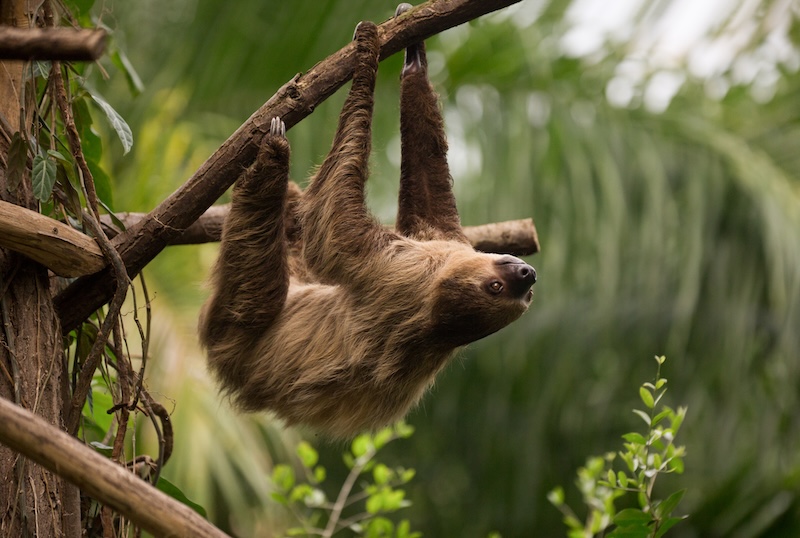
A sloth’s fur hosts a fascinating mini-ecosystem. Algae, which grow on their coarse, shaggy coats, play a vital role in this environment.
This symbiotic relationship benefits both the sloths and the algae. The algae thrive in the damp fur, receiving nutrients, while providing camouflage.
The greenish hue from the algae helps sloths blend into the foliage. This camouflage is crucial for avoiding predators that rely on sight.
Furthermore, their fur is not just an algae haven. It supports an array of insects and fungi, creating a rich, biodiverse habitat on the move.
This micro-ecosystem showcases the complexity and adaptability of sloths in their natural setting. These organisms collectively contribute to sloths’ survival by enhancing their camouflage.
By fostering such relationships, sloths illustrate nature’s interconnectedness. Their fur is more than mere protection; it is a thriving community beneficial to all its residents.
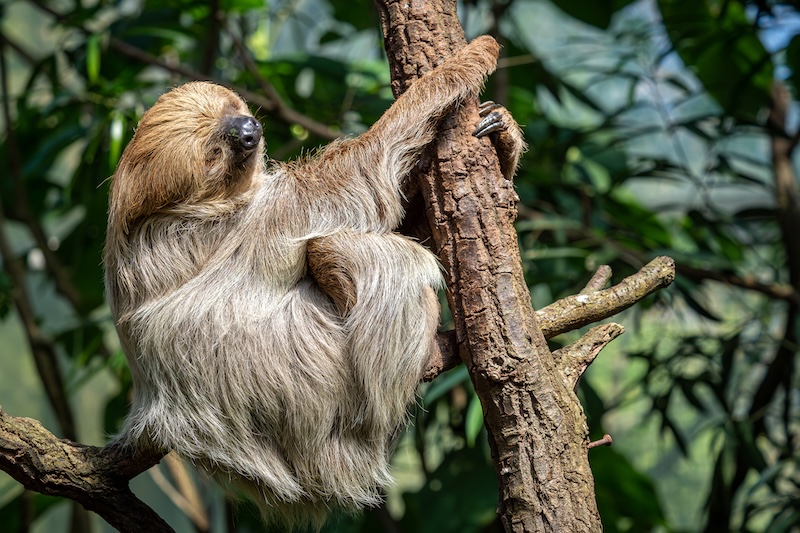
Living life at a deliberate pace comes with unique risks. Predators like jaguars and harpy eagles find sloths easy targets. Their slow movements make them vulnerable, especially when they descend from trees.
Sloths are not just prey to animals but also victims of human activities. Deforestation threatens their treetop homes, pushing them toward extinction. As forests disappear, sloths face mounting challenges to survival.
Habitat loss forces sloths to the ground, exposing them to more dangers. Roads and urban sprawl increase the risk of fatal encounters. Human-induced changes mean that sloths, once safely camouflaged high above, are now at greater risk.
Conservationists emphasize protecting these creatures from both predators and human threats. Without intervention, the future for sloths is grim. Sloths’ slow nature, once an evolutionary advantage, now hinders them in a rapidly changing world. Only concerted conservation can ensure their survival.
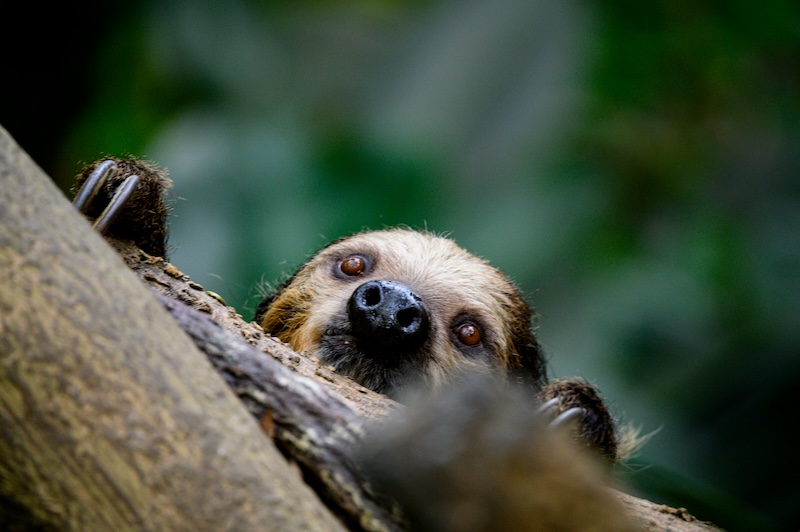
Sloths have captured the public imagination in unexpected ways. Their unhurried demeanor and endearing appearance have made them cultural icons. From adorable internet memes to popular stuffed toys, sloths charm people worldwide.
Films have played a significant role in boosting sloth popularity. Characters like Sid from the “Ice Age” franchise humorously highlight their slow, lovable nature. This whimsical portrayal has brought sloths into the mainstream, endearing them to audiences of all ages.
Additionally, the classic film “The Goonies” features a gentle giant named Chunk affectionately dubbed “Sloth.” This quirky character reinforces the image of sloths as gentle, beloved creatures. Their widespread appeal underscores the sloth’s transition from the wild to pop culture fame.
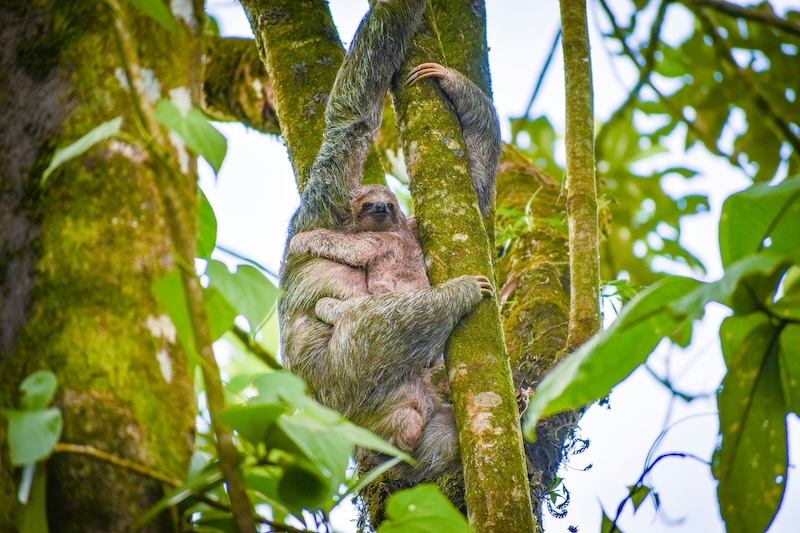
These Nature’s slowest creatures face significant threats today. Deforestation and habitat loss are major concerns for these arboreal mammals. Conservation efforts aim to address these threats and protect sloth populations in their natural habitats.
Various organizations are actively working on sloth conservation. They focus on preserving rainforest ecosystems and restoring lost habitats. These initiatives ensure sloths have access to safe environments where they can thrive.
Ecotourism plays a pivotal role in their protection. By encouraging sustainable tourism, local communities benefit economically while preserving natural habitats. Travelers also gain a deeper appreciation for sloths and their importance in the ecosystem.
Sustainable ecotourism initiatives often include education on sloth conservation. Visitors learn about the impact of human activities and how they can contribute to protection efforts. This knowledge empowers travelers to become advocates for sloth conservation.
Public awareness is crucial for driving conservation success. Campaigns and celebrations, like International Sloth Day, raise awareness about the plight of sloths. They also highlight the vital need for ongoing conservation support and action.
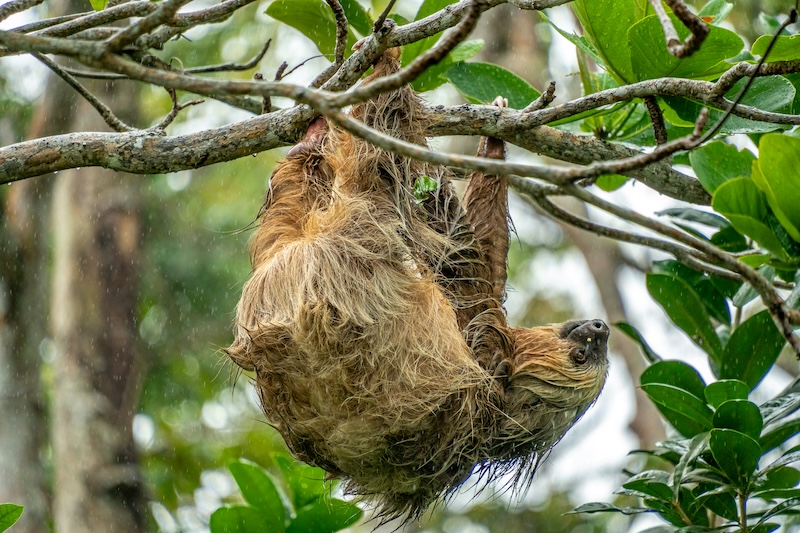
Spotting sloths in the wild requires patience and respect. Sloths blend into their environment effortlessly, making them a challenge to spot. A keen eye and understanding of their habitat will enhance your chances of a successful encounter.
When observing sloths, it’s important to keep a respectful distance. Avoid disturbing their natural behaviors and movements. Use binoculars or a camera with a good zoom to observe them without disrupting their serene existence.
Travel bloggers and wildlife enthusiasts should prioritize guided tours for sloth observation. Local guides have expert knowledge of sloth habitats and behaviors. Their experience ensures a responsible and rewarding experience for all involved, while minimizing ecological impacts.
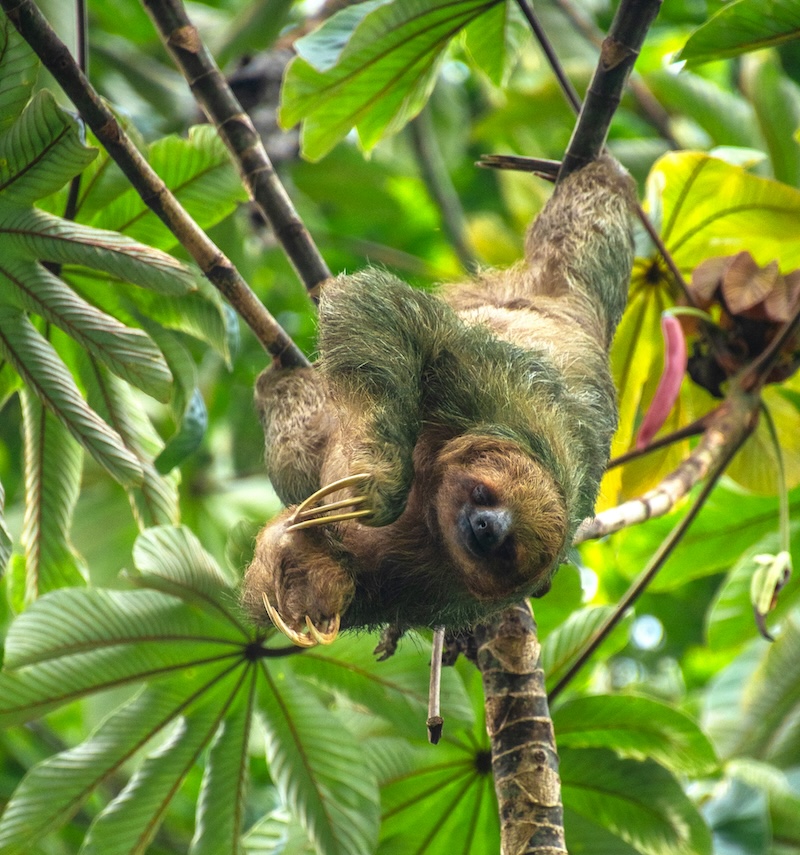
Sloths are a marvel of nature, showcasing unique adaptations for survival. Their slow pace might seem leisurely, yet it offers fascinating insights into their world. These creatures play a crucial role in maintaining the biodiversity of rainforests.
Supporting sloth conservation is vital for preserving these gentle creatures and their lush habitats. By embracing their pace, we gain a deeper appreciation for the intricate balance of ecosystems.
Let’s help with conservation efforts so future generations can also enjoy seeing sloths in their natural habitat.
If you got any questions, please do not hesitate to send us a message. We reply within 24 hours!
+51 900 394 399
info@biomanuexpeditions.com
reservas@biomanuexpeditions.com
